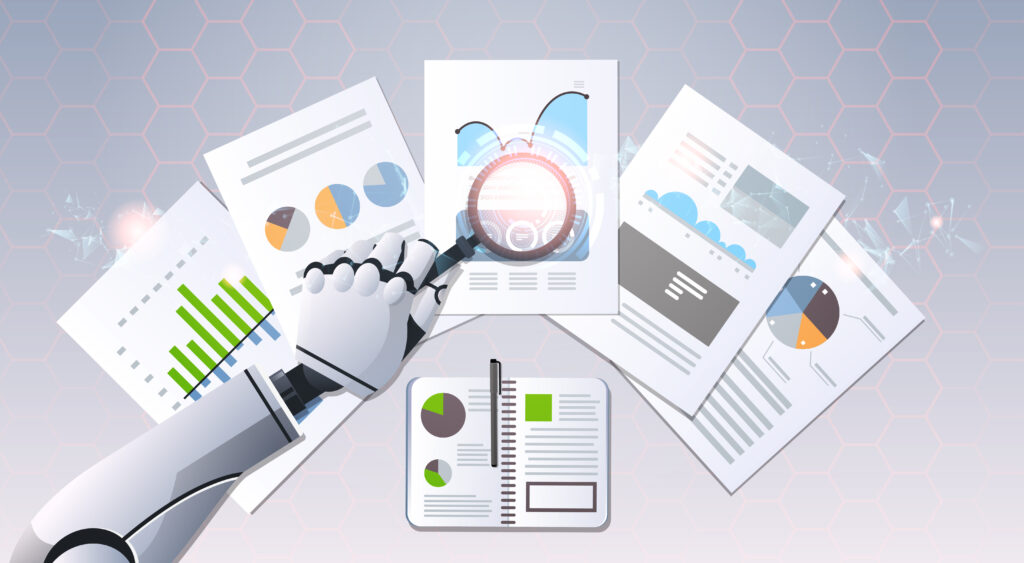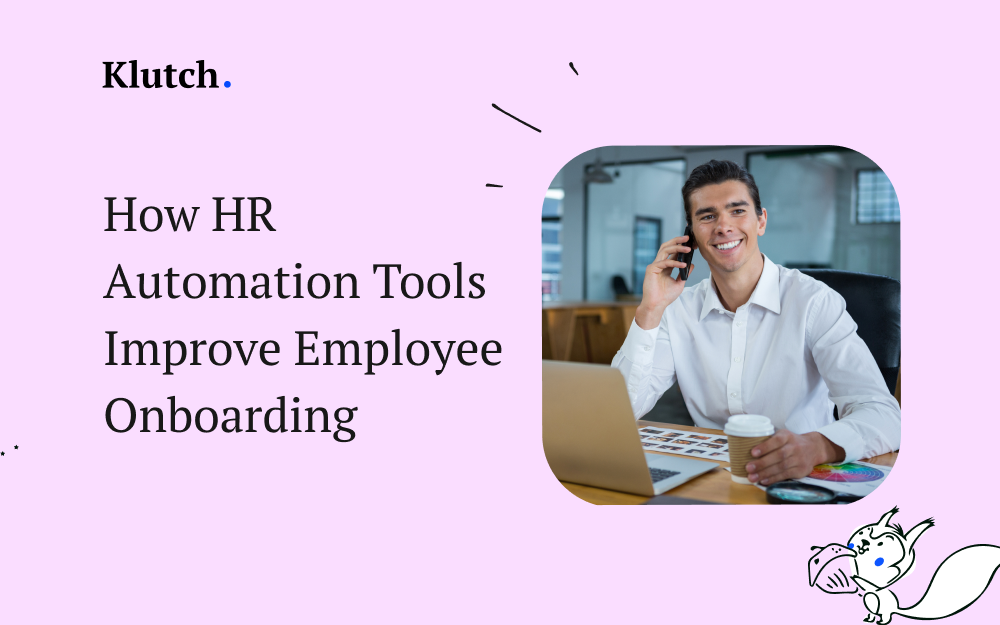Imagine starting a new job. You’re excited about the opportunity, eager to meet your colleagues, and ready to contribute your skills. But then, the onboarding process begins, and you find yourself buried under piles of paperwork, struggling to navigate through various forms and documents. No new employee wants that. That’s why you should consider adding HR automation tools.
HR automation tools are like superheroes for employee onboarding. They personalize your onboarding experience. They understand that each employee is unique, with different needs and preferences. So, they offer customized workflows and automated notifications, ensuring that you receive the right information and resources at the right time. It’s like having a personal onboarding assistant guiding you through the process.
Let’s not forget the impact on HR professionals. With HR automation tools, they can bid farewell to tedious administrative tasks and focus on building meaningful connections with new hires. They can devote their time and energy to creating an engaging onboarding experience, rather than drowning in paperwork and manual processes.
So, whether you’re a new employee excited about starting a job or an HR professional aiming to improve the onboarding process, HR automation tools are here to make your life easier. They revolutionize the onboarding experience, making it efficient, personalized, and enjoyable.
What is HR Automation?
HR automation refers to the use of technology and software solutions to automate various human resource management tasks and processes. These tools aim to streamline administrative tasks, improve data accuracy, and enhance communication and collaboration within an organization.

The Importance of Employee Onboarding
Employee onboarding plays a crucial role in setting the stage for an employee’s success within an organization. It encompasses the process of integrating new hires into the company culture, providing them with the necessary information and resources, and ensuring a smooth transition into their roles. Effective onboarding not only boosts employee engagement and productivity but also reduces turnover rates.
Traditional employee onboarding processes often suffer from several challenges that can hinder the overall effectiveness of the process like manual paperwork, lack of standardized procedures, poor communication, and time-consuming administrative tasks. Addressing these challenges is essential to refining your onboarding strategy and providing a seamless onboarding experience for new employees.
Benefits of HR Automation Tools in Employee Onboarding
Streamlined Administrative Tasks
HR automation tools make HR tasks easier by using technology to handle paperwork and administrative duties. Instead of filling out forms and managing documents manually, these tools digitize the processes. This saves time and effort for HR professionals and new hires.
Enhanced Communication and Collaboration
Good communication and teamwork are important for a smooth onboarding experience. HR automation tools help HR teams and new hires stay connected by using one central platform. This allows for instant updates, quick messaging, and easy access to information. It makes things clear and helps information flow smoothly during the onboarding process.
Improved Data Accuracy and Compliance
Manual data entry can have mistakes and make employee records incorrect. HR automation tools help keep employee data accurate by automating data collection and stopping duplicate entries. They also make sure data protection rules are followed. These tools often check and verify data, which reduces mistakes and keeps the data reliable.
Personalized Onboarding Experience
HR automation tools help companies make new employees feel welcome and supported when they join. These tools let HR professionals create custom onboarding experiences. They can set up automated messages and tasks that are personalized for each new hire. This means that employees get the right information and resources at the right time. It makes them feel valued and helps them settle in smoothly.
Common HR Automation Tools for Employee Onboarding
To make the onboarding process smoother, companies can use different HR automation tools. Some popular tools are:
Applicant Tracking Systems (ATS)
ATS software simplifies and automates the recruitment and onboarding process. It enables HR teams to track and manage job applications, screen candidates, and seamlessly transition them into the onboarding phase.
Knowledge Base
A knowledge base is a helpful tool for HR that makes onboarding employees easier. It organizes and stores important onboarding materials in one place. With a knowledge base, HR teams can make sure that all employees get the same and latest information. This keeps the onboarding process consistent and helps new hires find accurate and reliable information easily.
Employee Self-Service Portals
Self-service portals allow new employees to easily access and handle their own onboarding information. They can complete important forms, access training materials, and communicate with HR staff all in one convenient online platform.
Digital Document Management
Digital document management systems remove the necessity of physical paper documents and manual filing. HR professionals can securely store, arrange, and retrieve employee records, contracts, and other important documents effortlessly.
Task Automation and Workflow Tools
Automation tools help automate repetitive tasks and streamline workflows. HR teams can create automated workflows for onboarding processes, ensuring that each step is completed accurately and efficiently.
Learning Management Systems (LMS)
LMS platforms provide a centralized hub for training and development activities. They allow HR professionals to deliver onboarding training modules, track progress, and assess the effectiveness of training programs.

What to Consider When Implementing HR Automation Software
When implementing HR automation tools for employee onboarding, certain considerations are essential for success:
Integration with Existing Systems
Ensure that the chosen automation tools seamlessly integrate with existing HR systems and software to avoid data silos and ensure a smooth flow of information.
User-Friendly Interface and Training
Select tools with intuitive interfaces and provide adequate training to HR professionals and new hires to ensure efficient usage and maximum adoption.
Data Security and Privacy
Prioritize tools that adhere to stringent data security and privacy standards, protecting sensitive employee information and complying with relevant regulations.
Scalability and Flexibility
Choose tools that can scale as your organization grows and adapt to evolving onboarding needs. Flexible solutions allow for customization and future-proofing.

Key Metrics to Measure the Effectiveness of HR Automation in Onboarding
Using HR automation in the onboarding process can bring many benefits to organizations. To understand how effective HR automation is in onboarding, it’s important to track key metrics that show its impact on efficiency, accuracy, and employee satisfaction. Here are some important metrics to consider:
- Time-to-Productivity: This metric measures how quickly new hires become productive and start contributing to their roles. Automating tasks like paperwork, access setup, and training assignments can speed up onboarding and reduce the time it takes for employees to become fully productive.
- Onboarding Completion Rate: Tracking the percentage of new hires who successfully complete the entire onboarding process gives insights into the effectiveness of HR automation. A high completion rate shows that automation has streamlined the process, ensuring that new employees finish all necessary tasks and requirements.
- Compliance and Accuracy: HR automation helps ensure compliance with legal and regulatory requirements during onboarding. Metrics like accuracy of employee data, completion of mandatory training, and adherence to documentation processes can show how well automation maintains compliance and reduces errors.
- Employee Engagement and Satisfaction: Measuring employee engagement and satisfaction levels during onboarding gives valuable feedback on the impact of HR automation. Surveys, feedback forms, and interviews can collect insights on how automation has affected the overall experience, task completion ease, and level of support received.
- Cost Savings: HR automation can save costs by reducing manual administrative tasks and minimizing errors that lead to extra work. Tracking cost savings related to less paperwork, streamlined processes, and increased efficiency gives a measurable indication of the financial impact of automation.
- Manager Feedback: Gathering feedback from managers who oversee the onboarding process provides valuable insights into the effectiveness of HR automation. Their input on improved efficiency, reduced workload, and overall satisfaction with the automated onboarding process helps to assess the impact on managerial effectiveness.
- Employee Retention: Onboarding plays a crucial role in employee retention. By comparing the retention rate of new hires who went through automated onboarding with those who didn’t, organizations can determine the impact of automation on fostering a positive and engaging employee experience.
Conclusion
Automated tools for HR have changed the way new employees are welcomed to a company. These tools bring many advantages for HR professionals and new hires alike. They make tasks like paperwork and communication easier, help keep the information accurate, and create a personalized onboarding experience.
There are different types of HR automation tools available, however, it’s important to choose tools that can be integrated smoothly, are easy to use, keep data secure, and can grow with the organization.



